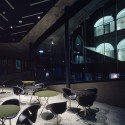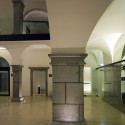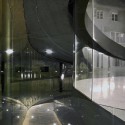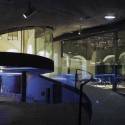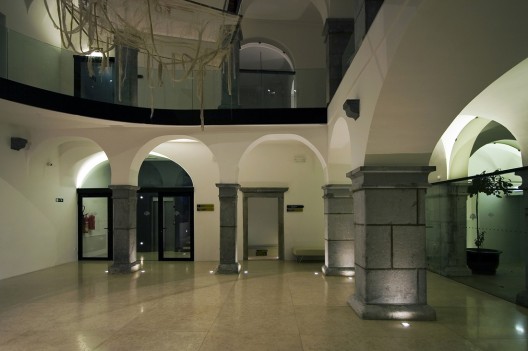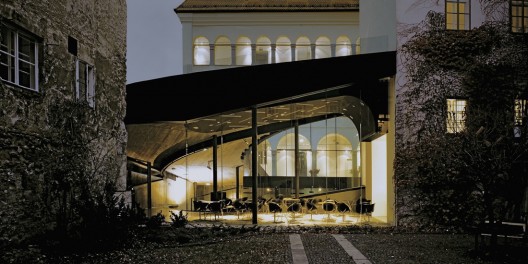
Architect: OFIS arhitekti
Location: Ljubljana, Slovenia
Design Year: 1998-2000
Construction Year: 2000-2004
Project leaders: Rok Oman & Špela Videčnik
Design Team: Rok Oman, Špela Videčnik, Rok Gerbec, Josip Konstantinovič, Karla Murovec, Damjan Bradač
Competition Design Team: Rok Oman, Špela Videčnik, Lidija Dragišič, Marko Coloni
Client: Mestni muzej Ljubljana
Constructed Area: 2,650 sqm (existing building) / 790 sqm (extension)
Structural Engineering: ELEA IC d. o. o
Budget: 6,71M Euro (US $10,6M)
Photographs: Tomaz Gregoric
The project involves the renovation and extending of the Auersperg Palace, which is located in the heart of the protected historical city centre. The palace and the plot have a very rich history dating from the prehistoric period to Roman and medieval times. Each era added something to the building.
During the course of history the purpose of the palace changed several times, such that the existing organization of the floor plan was not suitable for hosting a museum programme. The spaces were labyrinthine and disconnected.
The competition entry suggested a spiral itinerary for the visitor through the exhibition spaces and proposed an added element to connect the wings of the palace.
The first spiral. The walk starts underground at -3 m, where the ground level of Ljubljana was situated in prehistory. Since the city’s ground level rose over the years the walkway ascends through the era of Rome, represented by an original Roman road, then medieval and baroque Ljubljana, where the museum bar is located, before returning to the ground-floor lobby. The archaeology is preserved in situ - no stone has been relocated.
The courtyard floor bifurcates and rises parallel to this path and the location of the Roman road; it forms a roof above the stepped archaeology.
The second spiral functions as a roof over the archaeology from level -3 m to level zero, rising above the courtyard and becoming a level balcony, thus affording different views of the courtyard and the palace.
The third spiral continues inside the palace on level +4 m as a balcony overlooking the main hall. Ascending up the old staircase, the spiral becomes a suspended ceiling (at +7.5 m), containing the whole service infrastructure: climate control, diffuse lighting, the sound and fire protection system. The suspended spiral continues through the rooms, taking the visitor through the exhibition.
The same situation is repeated on the next floor (at +12.5 m).
The existing palace was renovated using necessary, minimal elements like frameless windows and doors and neutral materials. The exhibition spaces are preserved at their original size, as per the conservation programme. Furniture in the palace is integrated within the existing walls. The oak used is local oak, and the colours of the glazed surfaces arise from those used by archaeologists to define different historical eras.
At the time of the competition it was thought that there would more archaeological remains on the site but it was not known where these might be and what importance they would have. This part of the project had to be flexible and adaptable, therefore. The proposed solution was an open-plan basement with an adaptable structural system. The structural plans were drawn as a 3D-computer module that was adapted in relation to the suggestions of the archaeologists.
